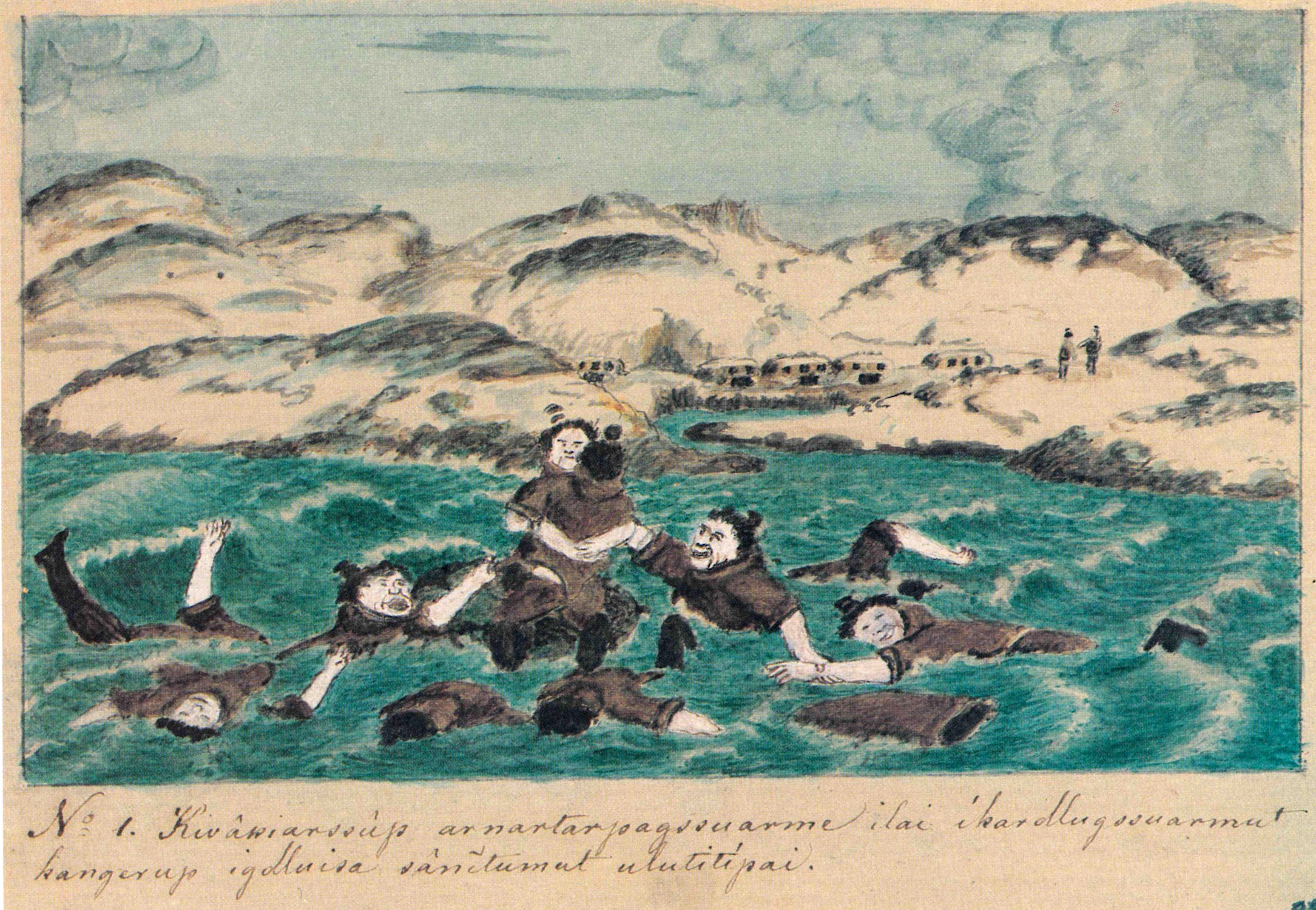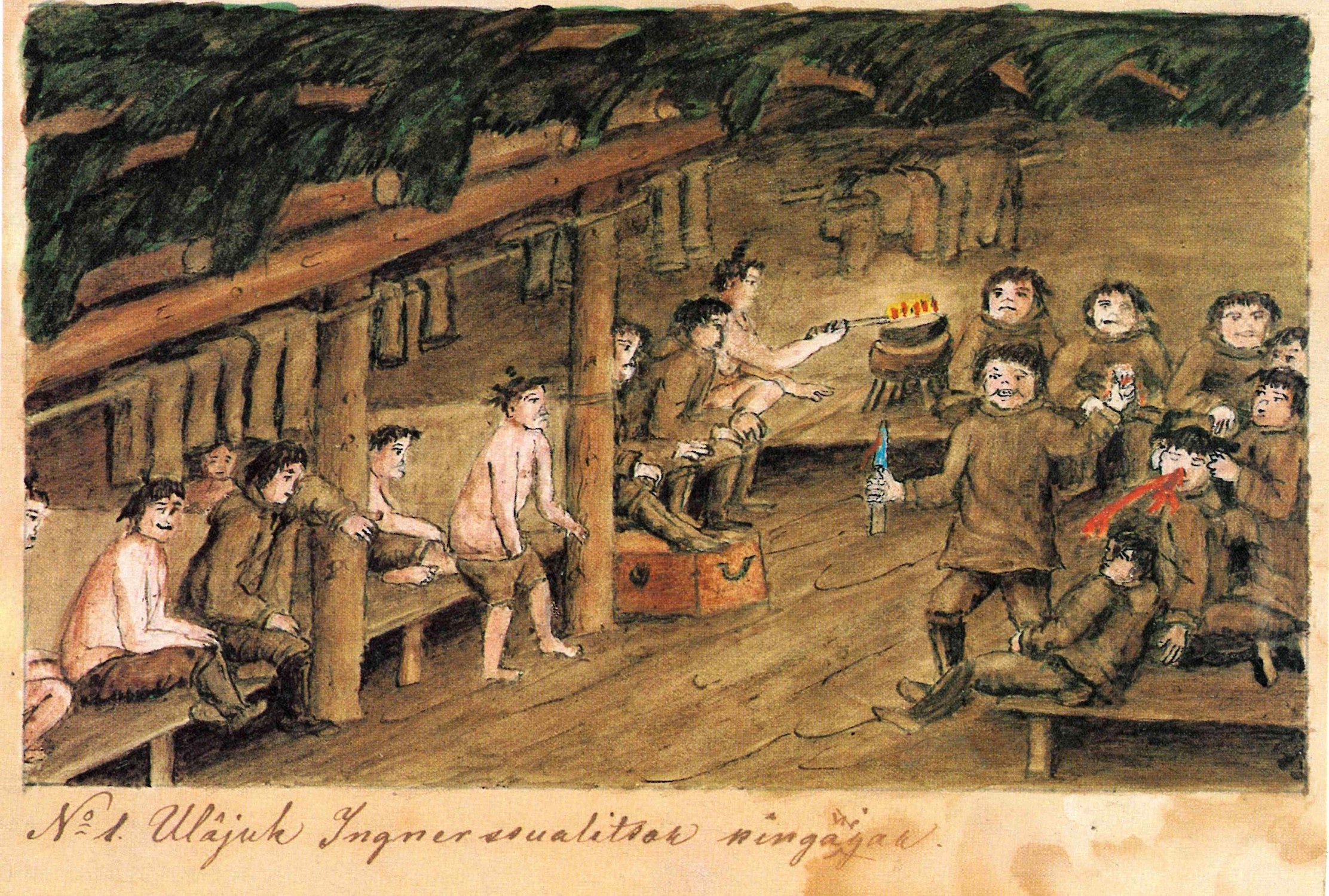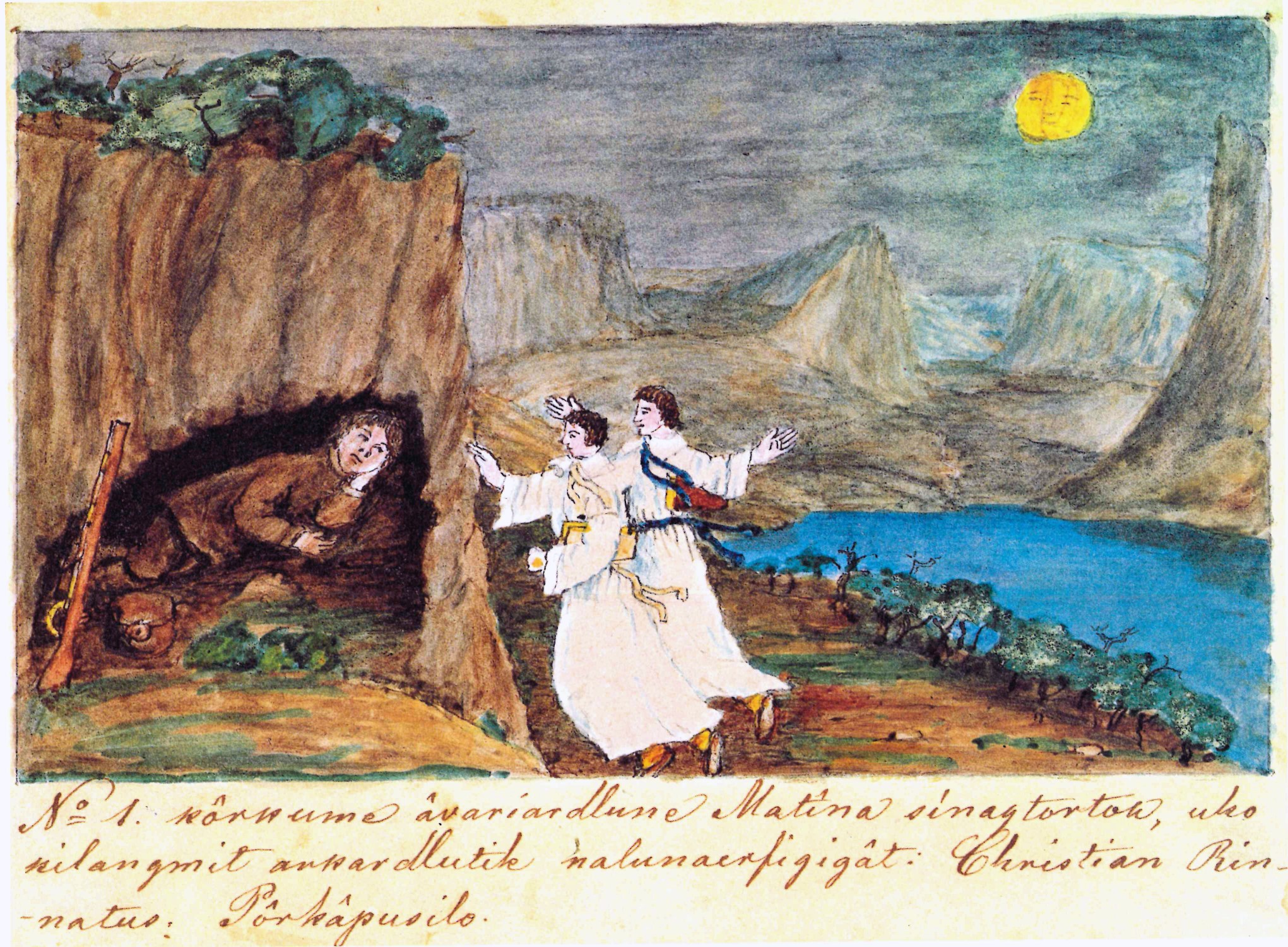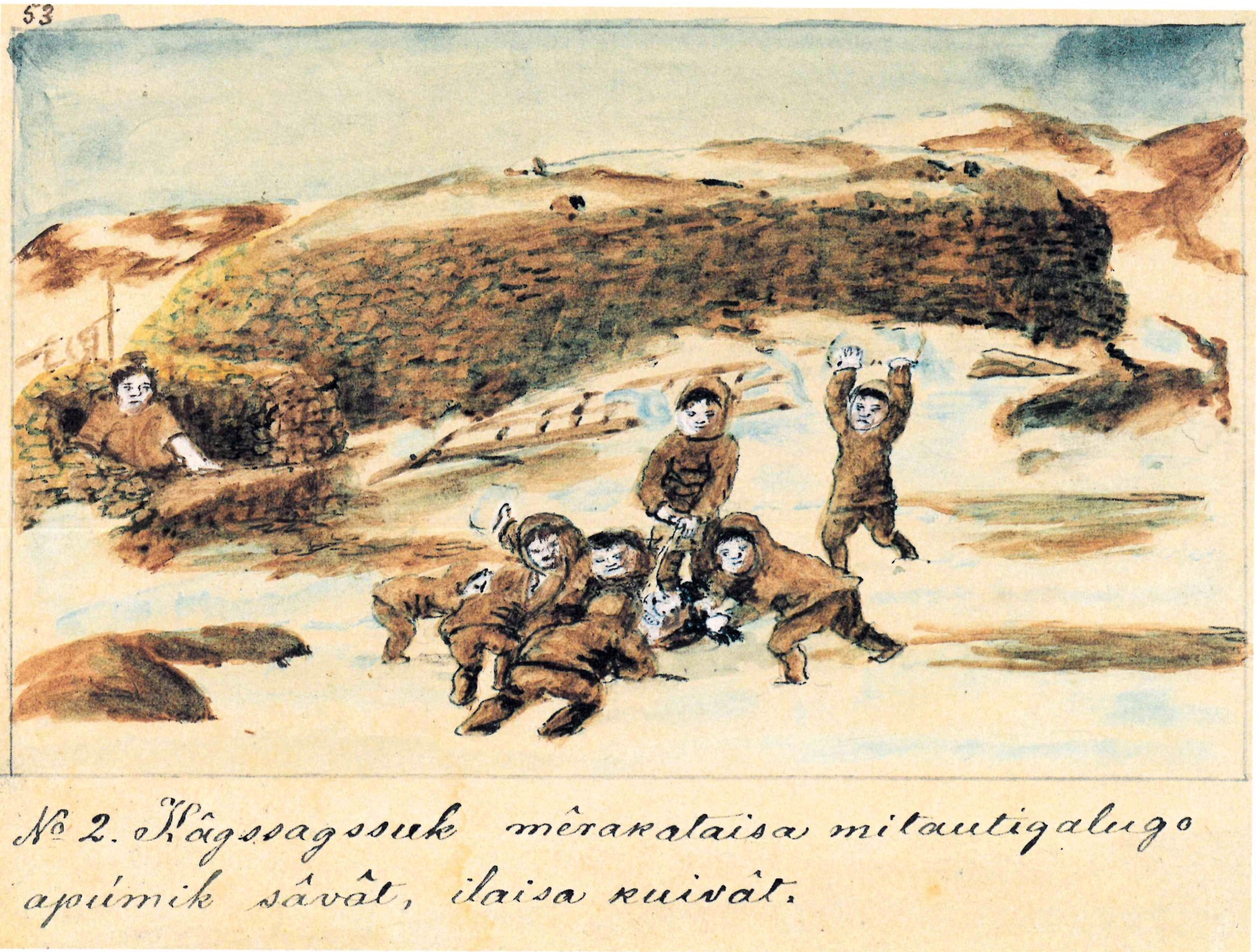The tale of Qivaaqiarsuk

NUNATTA KATERSUGAASIVIA ALLAGAATEQARFIALU

NUNATTA KATERSUGAASIVIA ALLAGAATEQARFIALU
Fertility is central to Inuit culture and is a recurring theme in the ancient storytelling tradition, not least in the tale of Qivaaqiarsuk (Qivaaqi means sculpin) told by Aron of Kangeq, among others.
One of the focal points is fertility, both of the landscape and of women. Qivaaqiarsuk is always lucky in his hunting endeavours, but he has to provide for many women, and he is unscrupulous if they become more of a nuisance than a help.
The drawing of Qivaaqiarsuk shows how he kills many women in one go; he lures them out to gather seaweed at low tide, and when high tide comes, he lets them drown.
The tale of Ulaajuk
Innersuit (plural; singular: innersuaq) are fire beings often called beach spirits because they live under the beach. Those who live highest up are friendly. They are often the kayakers’ helping spirits and protect them when they go hunting. Those who live deeper down have no noses. These innersuit should be avoided. They are jealous of humans and may imprison them, cut off their noses and turn them into innersuaq.
In this story, the young man Ulaajuk has been out hunting and has met an innersuaq from deep below. The innersuaq forces Ulaajuk to follow him, cuts off his nose and holds him captive. Ulaajuk invokes his helping spirit, who comes to free him. As they row away together, the helping spirit says »Hurry up and turn around, your nose is coming flying after you!« and Ulaajuk’s nose comes flying and returns to its place.

NUNATTA KATERSUGAASIVIA ALLAGAATEQARFIALU

NUNATTA KATERSUGAASIVIA ALLAGAATEQARFIALU
The tale of Qooqqut
A tale from the 1850s featuring a powerful man who refuses to get baptised. He does not understand all the talk about salvation, but he understands what the angakkuit are saying. After a long time, however, he changes his mind, and in baptism he is given the name Mattiina. On a caribou hunt in Qooqqut in Nuuk Fjord, Mattiina dreams that two angels descend from the sky. They sing beautifully and then tell him that one angel, previously called Poorkaaputsi by its loved ones, has no body but has become pure soul, while the other, Christian Renatus, still has a body.
Christian Renatus was one of the early Christian catechists and also one of the good storytellers. This tale shows, among other things, how features of European culture are incorporated into the Inuit universe.
The tale of Kaassassuk
Kaassassuk is the name of the main character in a widely told tale among all Inuit. In East Greenlandic, the name means water beetle. It was believed that when the beetle lives at the bottom of dark lakes, it cannot be seen by death. When parents gave their boys this name, they did it to protect their lives in a society where it would be critical for the family if the provider died. The oral tradition of storytelling often portrays love for the childless and fatherless who lived without protection.
Kaassassuk was an orphan and bullied by both children and adults, but after enduring many hardships, he ventures out into the wild where he draws strength. Having gained incredible strength, he takes terrible revenge on all who have been mean to him.
Further reading
- Inuit way of life
- Inuit hunting culture
- Literature
- Museums of cultural history and heritage
- The Inuit culture, precolonial period
- Traditions and tales
- Visual arts and crafts
Read more about Culture in Greenland
